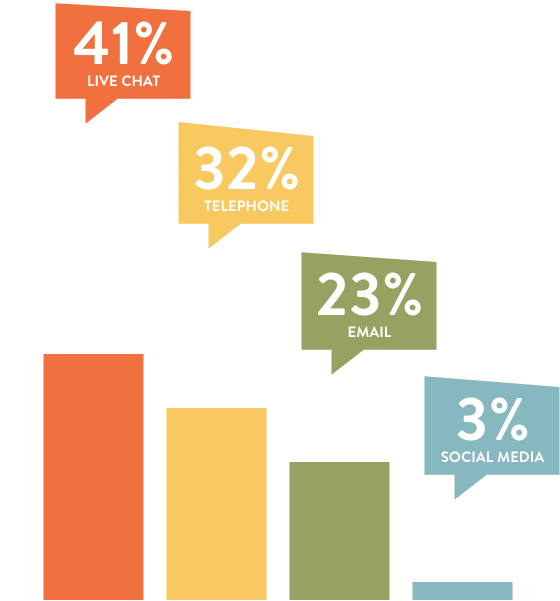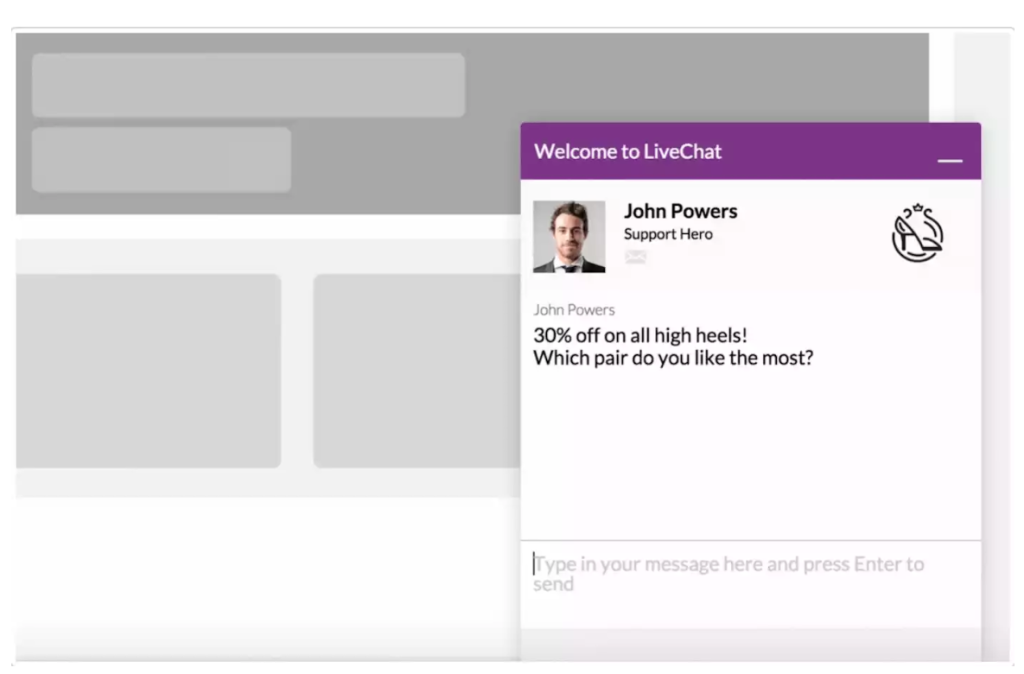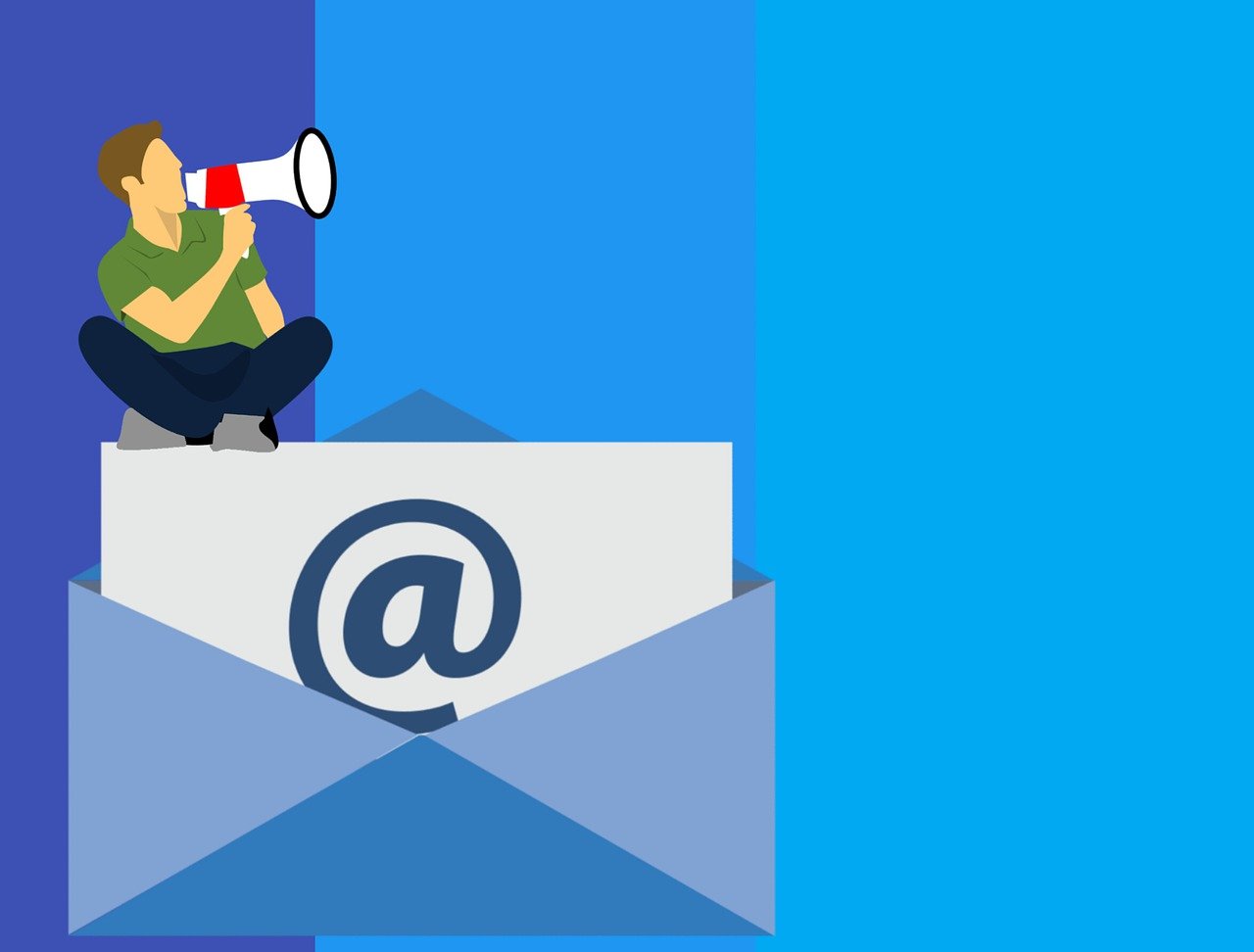If email marketing is not working, then Fortune 500 brands will not touch it with a ten-foot pole. But the fact that Walmart, Amazon, Apple, BuzzFeed, and a lot of other Fortune 500 brands are utilizing the email marketing strategy shows there is a lot of good in the marketing method.
Statista projects that there will be 4.3 billion global email users in 2023. If you add this to the fact that for every $1 you spend on email marketing, you can expect an average return of $42, there is no reason why your brand must not integrate email marketing.
It’s important to note, however, that no single innovation can solve all the problems in the marketing world and even though brands spend billions of dollars on digital adoption, 80% of consumers switch brands due to poor CX . Sometimes, we may need to re-strategize. For instance, emails may not suffice for a real-time experience and we will then need a live chat.
Live chat is fastly becoming the most popular means of communicating with customers. And this is largely due to the growth we are experiencing in messaging apps and automated bots.
The opportunities businesses are deriving from the live chat are mostly felt by customer support and marketing. Businesses are quickly catching up with the idea that live chat is much more than just a budget-friendly support channel.
Businesses globally know that marketing their products or services by email is a fast, flexible, and cost-effective way for the acquisition of new customers and also the retention of old customers by encouraging repeat website visits.
With email marketing, brands go on to create targeted and personalized messages. They are also able to segment customers based on certain characteristics and even automate emails.
The essence of all these is to build an understanding that can blossom into brand loyalty with the customers. You should, however, be very careful in how you use email marketing.
When you send marketing emails that are irrelevant, too frequent, disturbing, or unwanted, your customers will find it irritating and annoying. In the world of spam, you need to understand what your customer wants before sending out the message if you do not take this precaution, your messages may be deleted and the customer churns or unsubscribes.
When your emails go to the targeted audience, your click-through rates will significantly improve.
Why do you still need live chat?
Going by the fact that we have email marketing automation, whereby a marketer can send triggered or timed promotional emails to subscribers on their mailing list, there shouldn’t be a need for live chat.
Even though marketers can use email marketing automation to send out personalized messages to both prospects and customers on a schedule, it can’t be compared to live chat, which improves your customer journey by offering customers quicker service, faster resolution, and greater flexibility.
With live chats, you don’t have to wait on hold, responses must be in real-time. The average reaction time for humans to a visual stimulus is 0.25 seconds and 0.17 seconds to an audio stimulus. Going by this data, you should expect a service agent to resolve a customer’s pain point in about 60seconds.
With apps like Live chat Shopify, you can even respond faster to create convenient communication channels for customers who can contact you while browsing your website no matter where they are. The most important thing is that live chat is convenient.
Whether it’s the support team or the customer, you can carry on working, shopping, eating, or whatever you were doing while having a chat conversation. This is one customer service that is tailored to suit everybody, notwithstanding your lifestyle.
You may be confused on how live chat will be useful in the acquisition of customers; that is why it needs to complement email marketing. The whole idea will be to contact potential customers with email marketing and sustain them with live chat.
The potential customers can even be from your competitors who you got to know while conducting sentiment analysis of product review data. Millions of people around the globe today find it very easy to express their feelings on products and brands through the internet.

They can do this in a Yelp review, in a Twitter thread, or a Facebook post. It’s your business as a brand to intercept these online “conversations,” so that you can learn more about your customers and users, as well as the customers of your competitors in the market.
The initial means of contacting a customer or potential lead will be through email and you then switch to live chat for subsequent discussions. This will afford you the opportunity of offering real-time support to your customers.
Chat is not a complicated channel to install and manage and you need to install it because customers value personal and instant means of interaction The most important thing to customers is the opportunity to speak to a real person; they may do it through a phoning system or live chat support.
Nobody wants to wait for a delayed reply, and studies reveal that consumers prefer live chat support. This is even in the face of the popularity of social media as a means of expressing customers’ sentiments and opinions. Live chat offers customers immediate help while requiring minimal effort.

Live chat is a means for you to answer questions and address your customers’ pain points when they need your help most. Email marketing alone cannot do that and even where it’s done, it can’t be in real-time.
You can make use of a CTA to inform your visitors that they have the option of using live chat when they visit your website.

When sending emails, explicitly tell them that live chat will be available during the purchase process in case they encounter problems.
Conclusion
Your customers want to be recognized. You must, therefore, see them as individuals, not as ticket numbers. They become irritated when you make them repeat themselves endlessly.
By complementing email marketing with live chat, you will ensure a consistent, unified approach to customer service that is also personalized and proactive.



 Bitcoin
Bitcoin  Ethereum
Ethereum  Tether
Tether  XRP
XRP  Solana
Solana  USDC
USDC  TRON
TRON  Cardano
Cardano  Lido Staked Ether
Lido Staked Ether  Avalanche
Avalanche  Toncoin
Toncoin